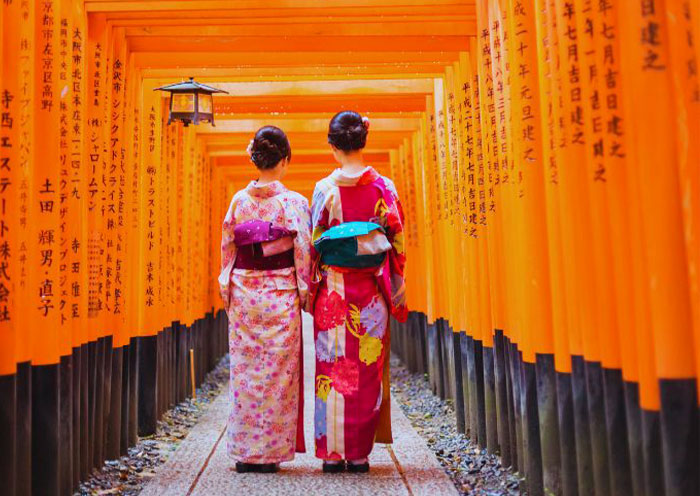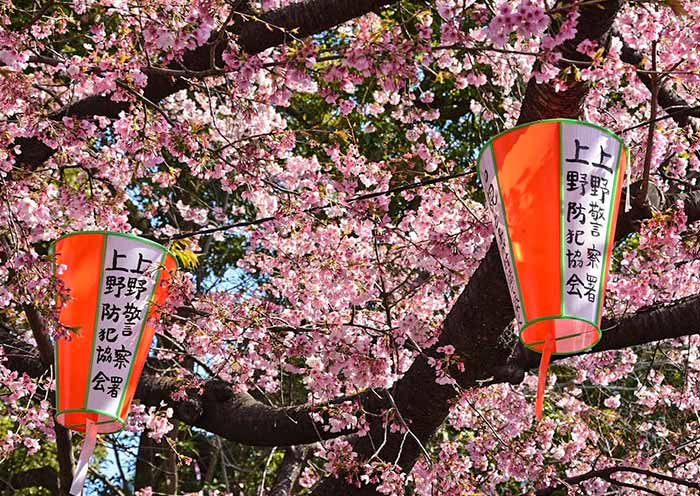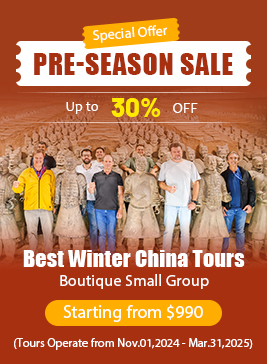Our 8 days group tour in December was amazing! Tokyo’s vibrant streets and Mount Fuji’s snow-capped beauty were breathtaking. Kyoto’s temples and Nara’s deer park offered a serene charm, while Osaka dazzled with its food and nightlife. Hiroshima’s Peace Memorial Park was deeply moving. The crisp winter atmosphere and festive illuminations added a magical touch. Traveling with a small group made the experience fun, seamless, and unforgettable!
14 Days Japan Panoramic Tour for First-Time Visitors 2025/2026
From
USD 4730![]()
- This is the price per person, based on a group of 6 people, 4-star hotel accommodation, and travel during the regular season.
- Early-bird rates apply to bookings made at least 6 months prior to the departure date.
- The price is subject to change depending on your travel season, group size, hotel class, and potential fluctuations in currency exchange rates.
- Highlights
- Itinerary
- Price
- Trip Notes
- Accommodation
- Photos
- Reviews
Perfect 2-Week Japan Trip for First-time Visitors
Planning to spend two weeks in Japan as a first-time visitor? I have the perfect 14-day Japan Tour for you that will allow you to visit all the top destinations while giving you ample time and opportunities to deeply experience Japanese culture and its natural beauty.
This two-week itinerary focuses on Japan's classic Golden Route, beginning with an exploration of Tokyo and its surroundings (Mount Fuji and Hakone). You'll then take the Shinkansen to Japan's Kansai region to tour its four major cities (Kyoto, Uji, Nara, and Osaka) before heading west to Hiroshima and Miyajima.
Explore Tokyo and its surrounding Mount Fuji & Hakone ( 6 days)
Spend the first few days in Tokyo and get a taste of Japan’s capital. Tokyo is a sprawling metropolis that combines the ultramodern with the traditional. From popular culture, and bustling hopping districts to historic temples and shrines, and gourmet experiences, Tokyo has it all. Enjoy two-day trips: the majestic Mount Fuji and the serene town of Hakone. Experience the awe-inspiring views of Fuji-san and enjoy a relaxing dip in a traditional Onsen.
Immerse in the Historical Heart of Kansai ( 7 Days)
Travel via Shinkansen to the Kansai region, the cultural heart of Japan. In Kyoto (3 days), stroll through centuries-old temples, exquisite gardens, colorful shrines, old Geisha districts that embody the essence of traditional Japanese culture. Take a scenic train ride to the suburbs of Kyoto to enjoy the natural beauty and calm of the area. Explore Uji, known for its green tea, and Nara, where you can meet friendly deer in Nara Park. End your Kansai trip to Osaka, famous for its great food and lively atmosphere and Universal Studios Japan.
Historical Hiroshima and Scenic Miyajima (1 Day)
Head west via Shinkansen to Hiroshima to learn about its poignant World War II history and visit the Atomic Bomb Dome.Take a short ferry ride to Miyajima Island, famous for its "floating" torii gate at Itsukushima Shrine.
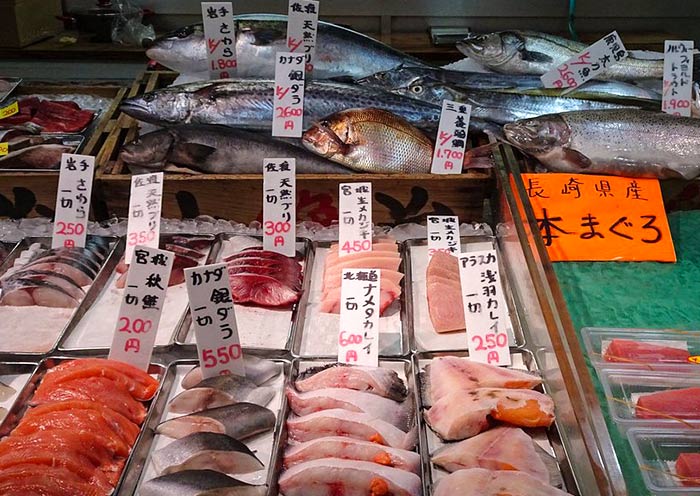
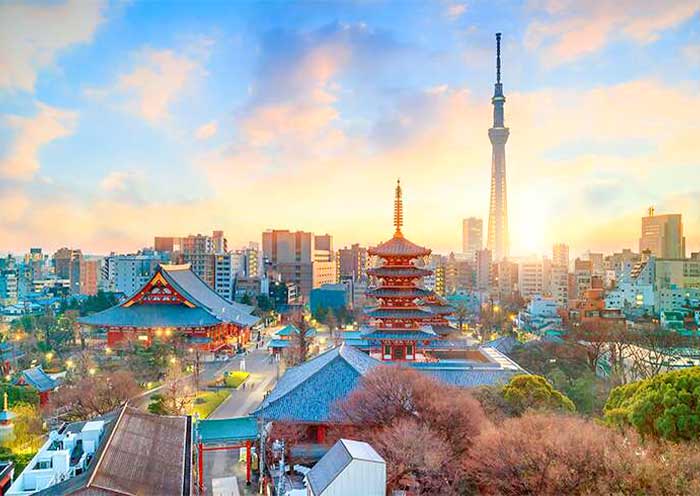
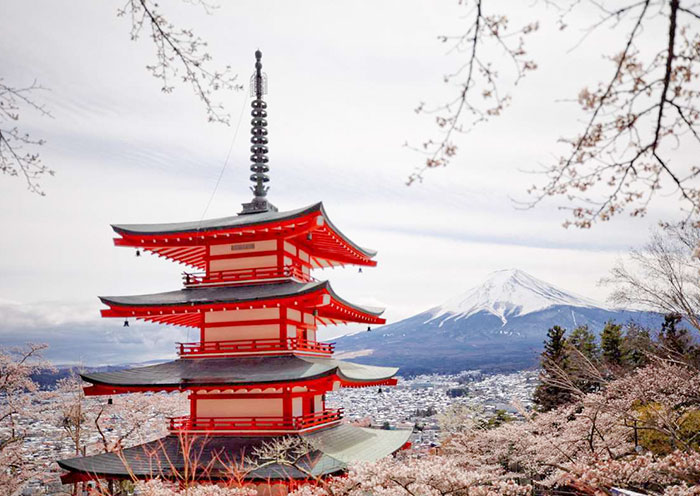

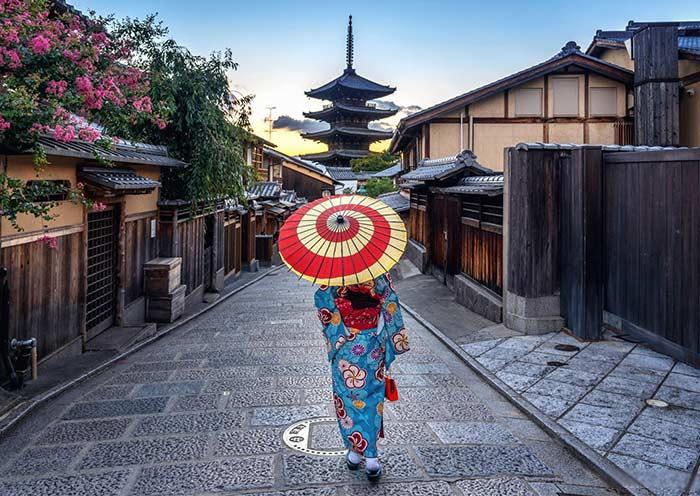




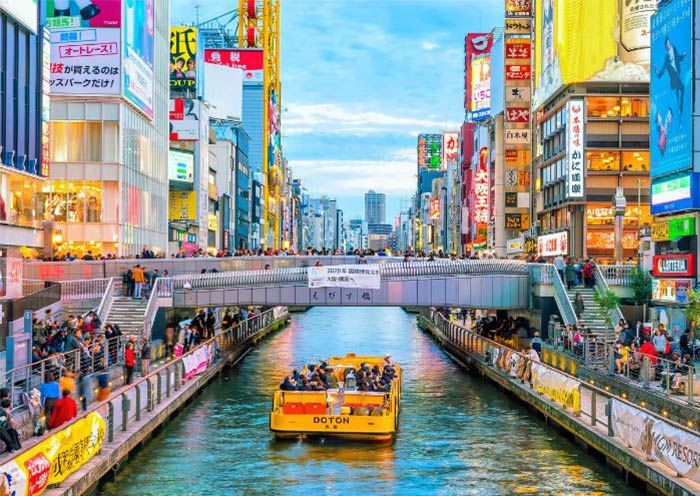
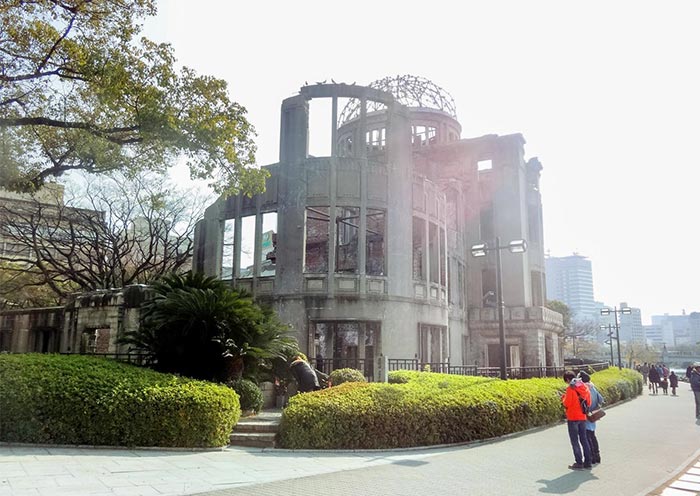
Itinerary at a Glance
Tokyo (4 Days)
Meiji Jingu Shrine, Shibuya Crossing, Senso-ji Temple, Tsukiji Fish Market
Mt. Fuji (1 Day)
Mount Fuji 5th Station, Arakurayama Sengen Park, Lake Kawaguchi, Kubota Itchiku Art Museum
Hakone (1 Day)
Hakone Open-Air Museum, Owakudani, Lake Ashi (Hakone Pirate Ship)
Kyoto (3 Days)
Fushimi Inari Taisha Shrine, Kiyomizudera Temple, Ninenzaka & Sannenzaka, Yasaka Shrine, Gion, Kinkakuji Temple, Nijo Castle, Sagano Scenic Railway, Arashiyama Bamboo Grove, Tenryuji Temple, Togetsukyo Bridge, Eizan Electric Railway, Kifune Shrine, Sanzenin Temple, Nishiki Market
Uji (0.5 Day)
Uji Matcha street, Byodoin Temple, Uji River (Uji Bridge)
Japan Nara (0.5 Day)
Todaiji Temple, Nara Park, Kasuga Taisha
Hiroshima (1 Day)
Hiroshima Peace Memorial Park (Atomic Bomb Dome, Hiroshima Peace Memorial Museum), Itsukushima Shrine
Osaka (3 Days)
Osaka Castle Park, Shinsaibashi-suji Shopping Street & Dotombori District
Itinerary Day by Day
Konnichiwa(こんにちは)!Welcome to Tokyo, the capital city of Japan! Upon your arrival at the airport in Tokyo, your driver (not English-speaking) will meet you at the exit and then escort you to the hotel. You can have a good rest in your hotel and get ready to explore Tokyo with your guide the next day.
Tokyo, the capital of Japan, is one of Japan and Asia's largest economic centers. Tokyo is a hub for Japanese culture and art, with numerous museums, art galleries, theaters, and cultural venues, serving as a vital platform for artistic activities and cultural exchanges. Tokyo stands as a significant base for technological advancement, nurturing numerous high-tech companies and innovative talents, holding leading positions globally in areas like electronics, automotive, and robotics technology.
Situated at the southern end of the Kanto Plain, Tokyo is surrounded by diverse natural landscapes including Mount Fuji, providing residents with leisure and outdoor activity spaces. At one point, the population of the Tokyo metropolitan area reached 36 million, accounting for one-third of Japan's total population. Despite the high cost of living, Tokyo provides residents with convenient living conditions, offering a plethora of shopping centers, entertainment facilities, and a rich culinary culture ranging from fine dining to street food.
Arrival Ideas:
- Japan has two commonly used international airports. Narita International Airport, located 63.5 kilometers from the center of Tokyo, is the primary international air hub for Tokyo, where flights from China to Tokyo usually land. Tokyo International Airport (Haneda Airport), is situated 17 kilometers from the center of Tokyo and mainly serves domestic flights within Japan and some international flights, including flights to South Korea and other East Asian regions.
- Cities that have direct flights to Tokyo include, but are not limited to: Beijing, Shanghai, Guangzhou, Shenzhen, Hangzhou, Xi'an, Chengdu, Chongqing, Hong Kong, Taipei, Kaohsiung, Seoul, Singapore, Bangkok, Kuala Lumpur, Jakarta, Bali, Manila, Ho Chi Minh City, Hanoi, and more. Please note that flight information is subject to changes based on time and market demand. Contact us to obtain the latest flight information and prices.
- In Japan, using public transportation such as the subway & JR trains is recommended to save costs, avoid traffic congestion, and help reduce carbon emissions. Taxi fares in Japan are relatively high, with a starting fare of around 660 Japanese yen and 140 yen per kilometer. Waiting time is also charged. Surcharges are applicable during nighttime and peak hours (+20%), and expressway tolls are additional. Extra fees are levied for large luggage. For instance, a taxi ride from Tokyo Tower to Narita Airport, covering about 60-70 km, might cost around 25,000-35,000 Japanese yen (roughly 170-237 USD).
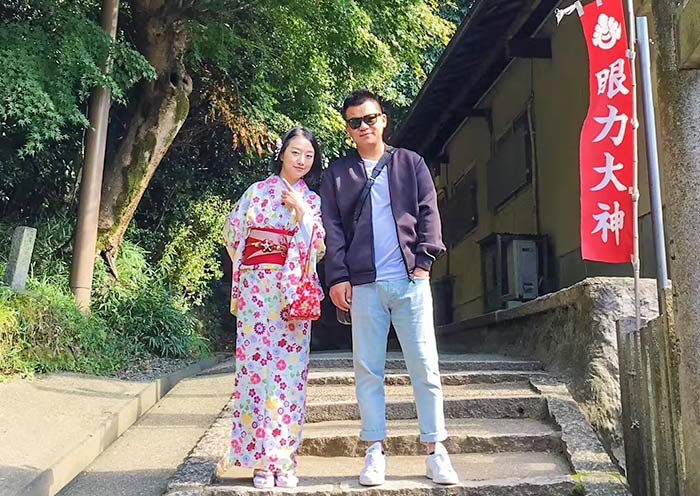

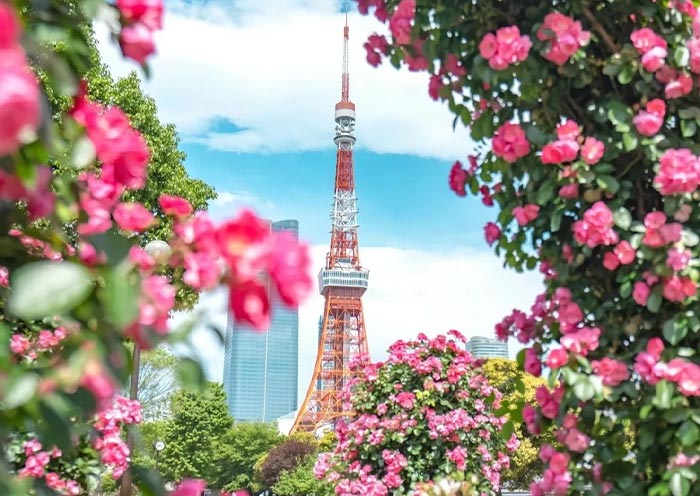

First to visit Meiji Jingu Shrine (Meiji Shrine), a Shinto Shrine dedicated to Emperor Meiji (1852-1912) and Empress Shoken (1849-1914), who played a crucial role in modernizing Japan while excelled in writing Waka (traditional Japanese poems of 31 syllables in the pattern 5-7-5-7-7). Meiji Shrine is also a popular venue for traditional weddings, where you will have the opportunity to witness a Japanese wedding procession and experience the charm of Japanese traditional culture.
The Meiji Shrine is nestled within a tranquil forest that covers an area of 70 hectares, providing a peaceful escape from the bustling city. This forest is home to over 100,000 trees that were donated from regions across Japan during the shrine's construction, in honor of their beloved Emperor Meiji (who established Shinto as the state religion) and Empress Shoken.
Take a stroll along the paths and enjoy the fresh air and natural beauty. You will walk through Japan's largest wooden Torii gate, standing in its natural wooden hue and weighing up to 13 tons. The Torii gate serves as the Symbol of Shinto Shrines, marking the transition from the worldly to the sacred. Then, you will notice the impressive Sake Barrel Wall along the South Approach, which features offerings from sake breweries and believers across Japan, including barrels of sake and Western liquor, reflecting Emperor Meiji's fondness for Western culture.
At the main hall of Meiji Shrine, you can witness locals washing their hands and rinsing their mouths at Purification Font before worship as a sign of respect. You can offer a 5-yen coin (symbolizing a connection) like locals and pray for blessings. In the eyes of the Japanese, Meiji Shrine is considered to have such boundless capabilities, from naming ceremonies for newborns, to coming-of-age ceremonies, graduation ceremonies, seeking marriage partners, praying for world peace, family well-being, safe travels, good health, warding off calamity, etc.
In addition to immersing yourself in Japanese Shinto traditions and architecture, revel in the enchanting surroundings filled with lush trees, serene ponds, graceful bridges, and stone pathways that epitomize the essence of traditional Japanese garden art. You should visit here to enjoy the vibrant bloom of cherry blossoms in spring, the verdant beauty of summer, the fiery hues of autumn leaves, and the serene snowy landscapes of winter.
Tips for Visiting Meiji Jingu Shrine:
- Wear modest clothing: Respect the sacred nature of the shrine by dressing appropriately.
- Be mindful of noise levels: Maintain a quiet and respectful atmosphere.
- Inner Garden (Optional; self-pay; once Imperial Property), and Meiji Jingu Museum (Optional; self-pay; items used by the imperial couple).
Then, move to visit Shibuya Crossing, one of the busiest intersections in the world, accommodating approximately 3,000 people per minute. As one of Tokyo's iconic locations, Shibuya attracts tourists and photographers from around the globe who come to observe and capture its essence. Numerous movies, TV shows, commercials, and music videos are filmed at this location, such as "The Fast and the Furious: Tokyo Drift."
Additionally, if you're interested in the story of Hachiko, the loyal dog, you can also visit his bronze statue. This Hachiko statue is located outside Shibuya Station and was erected to commemorate Hachiko's loyalty. Not only is it a popular meeting spot, but it's also a must-visit attraction for tourists. The statue symbolizes the power of loyalty and love, serving as a touching tribute.
In the afternoon, head to Senso-ji Temple (Asakusa Kannon Temple), a must-visit for anyone traveling to Tokyo. While there, be sure to capture a photo of Tokyo Skytree, Japan's tallest tower, visible in the distance.
Senso-ji Temple (Asakusa Kannon Temple), is one of the oldest and most famous Buddhist temples in Tokyo, located in the Asakusa district of Taito, Tokyo. The temple is dedicated to Kannon Bosatsu (Avalokiteshvara), the Bodhisattva of compassion. According to legend, in 628 AD, two fishermen retrieved a statue of Kannon from the Sumida River and decided to construct a temple to enshrine it. Completed in 645 AD, Senso-ji has since become a spiritual symbol of Tokyo.
The temple's entrance is marked by the iconic Kaminarimon (Thunder Gate), featuring a massive red lantern and protective deity statues that symbolize the temple's guardians against evil spirits. This gate is a popular photo spot and marks the beginning of Nakamise Street, a lively shopping street lined with stalls offering traditional Japanese snacks, crafts, and souvenirs, which leads up to the temple's second gate, the Hozomon.
Beyond the Hozomon lies the main hall, dedicated to Kannon and adorned with exquisite decorations, where devotees pray and worship. Adjacent to the main hall is the temple’s five-story pagoda, another striking feature, representing the traditional Japanese architectural style and symbolizing the five elements of Buddhist cosmology - earth, water, fire, wind, and void.
From Senso-ji looking south, you capture a photograph of Skytree Tower (Japan's Tallest Tower; 634 meters). On this street, you can see both old buildings and modern skyscrapers together, providing a visual contrast between traditional and modern.
After that, you can explore Tsukiji Fish Market (Now Toyosu Market). Tsukiji Fish Market was once the world's largest fish market, famous for its tuna auctions. However, in 2018, it relocated to a new, larger facility called Toyosu Market. You can still enjoy fresh seafood (sashimi, sushi, or seafood rice bowls), purchase kitchenware, and learn about a variety of seafood, including the characteristics, cooking methods, and nutritional value of different types of seafood.
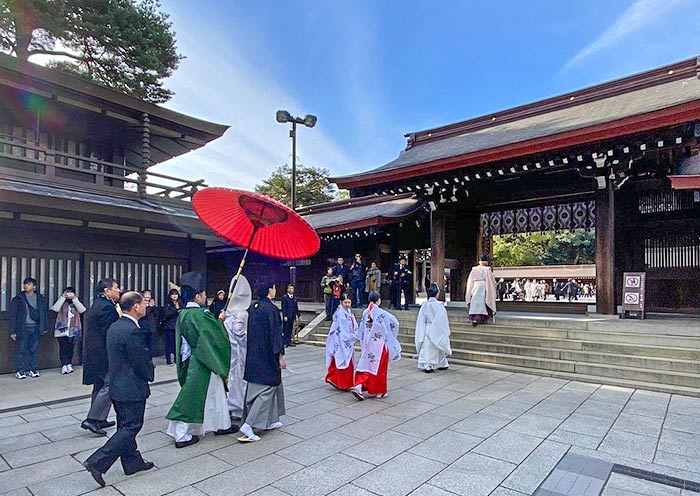


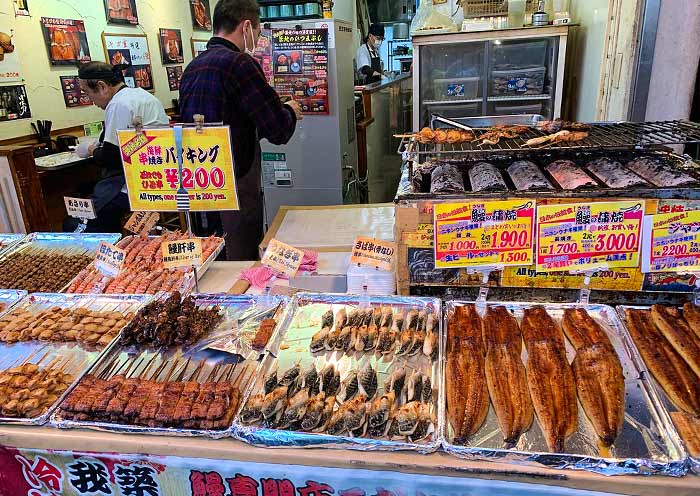
Today is your free day in Tokyo, and here are some activity and attraction recommendations based on various interests. Feel free to explore these on your own, and if you need tour guide services or any other assistance, please do not hesitate to contact us.
History & Culture Enthusiasts:
Imperial Palace East Gardens: The primary residence of Japan's Imperial Family, located in the heart of Tokyo. Explore the residence of Japan’s Imperial Family and its beautiful gardens.
Tea Ceremony: Participate in a traditional Japanese tea ceremony in places like Happo-en or the Japanese Tea Garden in Hamarikyu Gardens.
Sumo Wrestling: Visit the Ryogoku area and possibly watch a sumo practice or tournament if your visit coincides with the sumo wrestling calendar.
Museums and Galleries Enthusiasts:
Tokyo National Museum: Dive deep into Japanese history and culture.
Mori Art Museum: Enjoy contemporary art with a view in Roppongi Hills.
TeamLab Borderless: Experience the awe-inspiring digital art installations that blend technology and creativity in Odaiba.
Shopping & Fashion Enthusiasts:
Ginza: Tokyo's upscale shopping district, featuring designer boutiques, cutting-edge technology stores, and luxury department stores.
Harajuku: Known as the center of teenage culture and fashion, Harajuku is famous for its eclectic street fashion.
Omotesando: A chic fashion district with modern architecture and international brand stores.



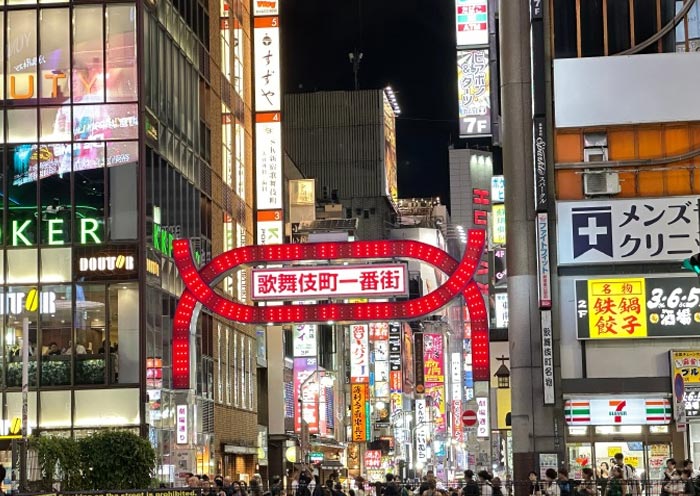
Today is your free day in Tokyo, and here are some activity and attraction recommendations based on various interests. Feel free to explore these on your own, and if you need tour guide services or any other assistance, please do not hesitate to contact us.
Children's Entertainment:
Tokyo Disneyland & Tokyo DisneySea, Legoland Discovery Center, Ueno Zoo Tokyo Dome City, Odaiba, Miraikan, Sumida Aquarium, Tokyo Tower's One Piece Tower
Technology & Modern Architecture Enthusiasts:
Odaiba: A futuristic entertainment district on a man-made island, featuring a giant Gundam statue, futuristic exhibits, and a Ferris wheel.
Roppongi Hills: A modern commercial and entertainment complex, including art museums and an observation deck.
Tokyo Tower: An iconic symbol of Tokyo, offering panoramic views of the city.
Tokyo Skytree: The second tallest structure in the world, featuring observation decks and shopping areas.
Anime & Gaming Enthusiasts
Akihabara: The mecca for anime, manga, and electronics, filled with anime stores, themed cafes, and gaming centers.
Ikebukuro: Known for its anime and gaming culture, featuring the Sunshine City shopping complex and character shops.
Ghibli Museum: A museum dedicated to the world of Studio Ghibli films, perfect for fans of Hayao Miyazaki’s work.
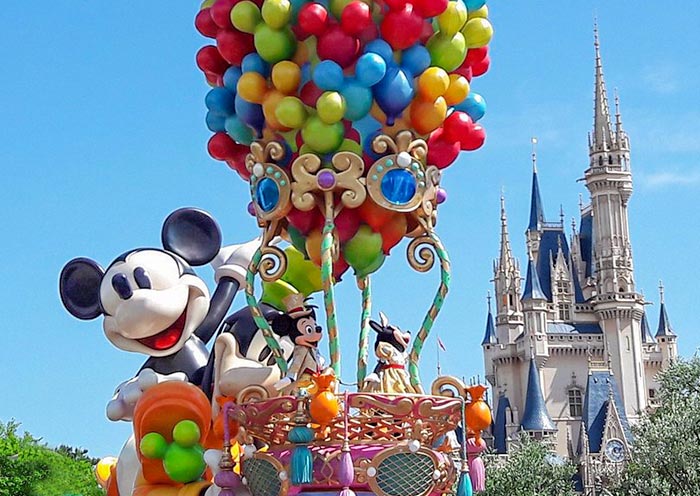
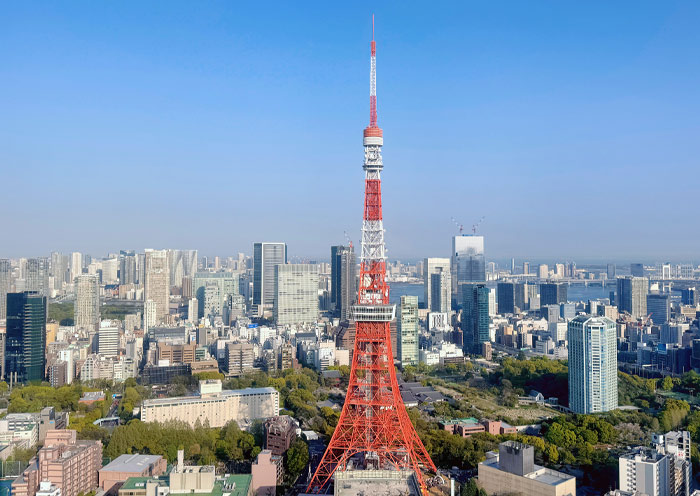
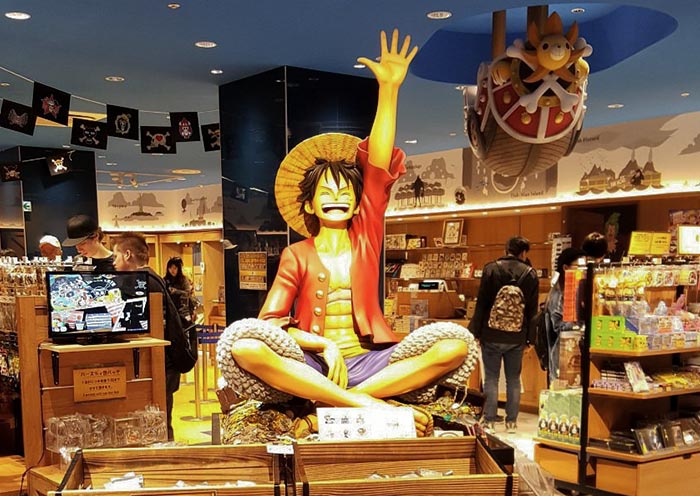
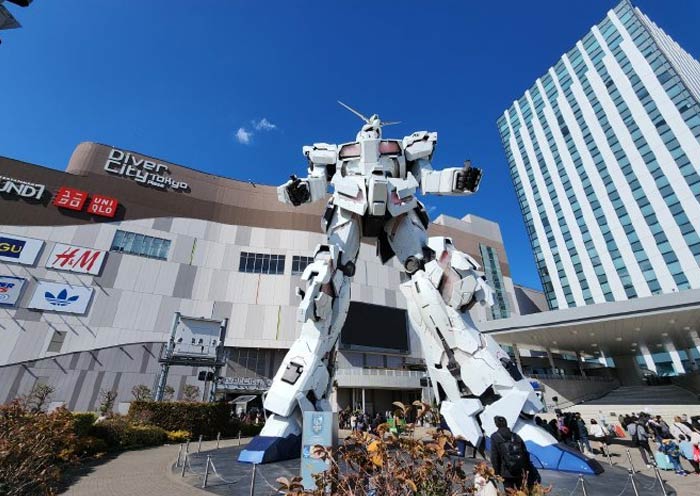
Today, enjoy a full-day trip to admire breathtaking views of Mount Fuji from three vantage points: Mount Fuji 5th Station, Arakurayama Sengen Park, and Lake Kawaguchi. Afterwards, drive to Hakone for accommodation.
Mount Fuji is the tallest mountain in Japan. It's a famous volcano with a perfectly symmetrical cone shape. Visiting Mount Fuji is essential for any traveler in Japan. As a UNESCO World Heritage Site, Mount Fuji (3,776m) stands as an iconic symbol of Japan, a cultural and spiritual landmark (recognized as a holy mountain in Shintoism), and a natural marvel. When picturing Mount Fuji, its distinctive perfect cone shape and snow-capped peak likely come to mind. Among the most renowned depictions is Katsushika Hokusai's 'Thirty-Six Views of Mount Fuji'. Hokusai, one of the "Three Greats of Ukiyo-e", is best known for his masterpiece "The Great Wave off Kanagawa" which can be seen on the 1,000 Japanese yen bill.
Start your journey to Mount Fuji 5th Station (2.5 hours,153 km; within the Fuji-Hakone-Izu National Park) for a close-up Mount Fuji view. It offers breathtaking panoramic views of Mount Fuji (if weather permits) and the surrounding area, including the Fuji Five Lakes. For those adventurous enough, the 5th Station is the starting point for climbing Mount Fuji. Experience the unique alpine environment and the thrill of being so close to Japan's iconic mountain.
Continue your journey at the renowned Arakurayama Sengen Park, where you can admire the magnificent view of a five-story pagoda set against a backdrop of majestic mountains. Hike about 15-20 minutes up to Arakurayama Sengen Shrine, dedicated to the mountain god. The shrine is surrounded by beautiful gardens and offers a peaceful atmosphere. Enjoy the gorgeous scenery and capture iconic photos at the famous Red Fuji Observation Deck.
Then, head to Lake Kawaguchi for a leisurely walk along the lakeside. Lake Kawaguchi is renowned for its clear waters that often reflect the majestic Mount Fuji (if weather permits), creating a postcard-perfect scene and making it a popular destination for both domestic and international tourists.
For art lovers, the next stop is the Kubota Itchiku Art Museum, located near Lake Kawaguchi. This unique architectural space houses a collection of beautiful rare kimonos, all designed and created by artist Ichiku Kubota. Ichiku Kubota (1917–2003) was a master textile artist renowned for his exquisitely crafted kimonos. He developed his own complex dyeing techniques, creating intricate patterns and colors inspired by nature, landscapes, and traditional Japanese culture. The tranquil museum setting also offers beautiful views of Mt. Fuji and the lake.
Notes:
- If the weather is clear, you can enjoy a good view of Mt. Fuji. However, if the weather is not favorable, Mt. Fuji may not be visible.
- The best time to view Mount Fuji is generally from December to February when skies are clearer and the peak is snow-capped. And also, April to May (for blooming cherry blossoms) and October to November (for the autumn foliage) are good time.
- Early mornings often provide the best visibility before clouds obscure the view. Different locations around Mount Fuji offer varying perspectives, with some spots known for their clear views.
After the tour, drive to your hotel in Hakone (approximately 1–1.5 hours).
Accommodations in Hakone:
Hakone is one of the oldest and most famous hot spring areas in Japan. There are many hot spring hotels and ryokans in Hakone, ranging from luxurious resorts to traditional Japanese inns. If you need to soak in the hot springs or book hot spring hotels, please contact your travel consultant in advance.

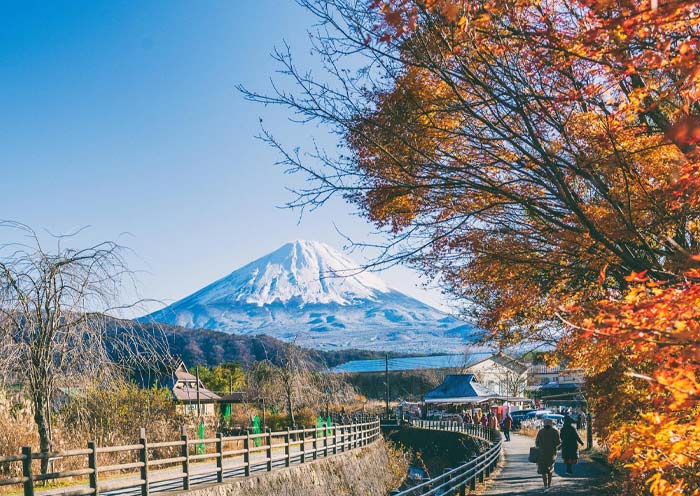

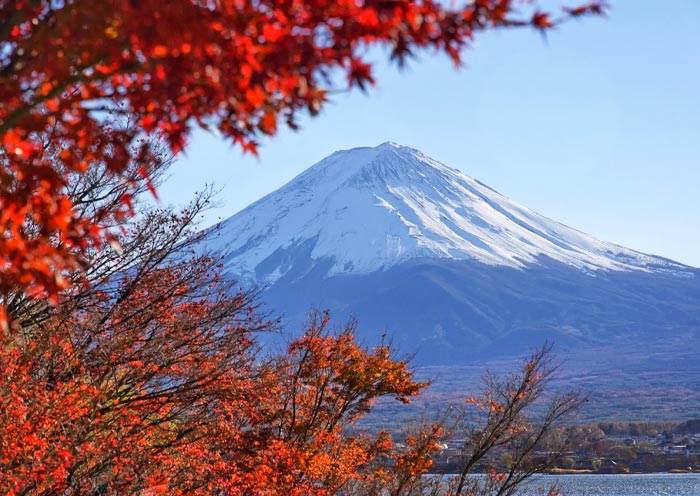
Start your day early by visiting the Hakone Open-Air Museum. It is Japan's first outdoor art museum with sculpture as its main theme, offering a unique experience of enjoying art in a natural setting. The museum covers an area of 70,000 square meters and houses over 400 sculptures from sculptors around the world, including works by renowned artists such as Henry Moore, Rodin, and Picasso. In addition to traditional sculpture displays, the museum features interactive art installations like the "Symphonic Sculpture," a large net woven with colored ropes, and the "Labyrinth of Contemplation," a sunken maze. These pieces combine both design and playfulness. There is also a children's playground inside a wooden structure house within the museum, providing a space for families to engage in interactive activities.
Next, travel to the volcanic valley of Owakudani, known for its active sulfur vents. You can take the cable car (ropeway) from Owakudani Station to Togendai Station (near Hakone Pirate Ship Togendai Port). The cable car ascends through a beautiful valley, offering stunning views of Lake Ashi, lush forests, and volcanic landscapes. Owakudani is a unique and fascinating destination in Hakone, you can experience the raw power of nature as you witness active volcanic activity, steaming vents, and sulfurous hot springs. The area is a result of a volcanic eruption thousands of years ago. Optional: Don't forget to try the famous "kuro-tamago" (black eggs), boiled in the volcanic hot springs, which are said to add seven years to your life.
Then, enjoy a Hakone Pirate Ship tour. The ships are designed to resemble pirate vessels, adding a touch of excitement to the cruise. You can enjoy breathtaking views of Mount Fuji (if weather permits), the surrounding mountains, and the serene lake. Take in the fresh air and the peaceful ambiance as you glide across the water. The ship connects various points around the lake, making it a practical way to explore the area. Another major highlight is passing through the iconic red torii gate of Hakone Shrine, which appears to float on the lake, providing an excellent photo opportunity.
After tour, you will be escorted to Odawara Station to board the Shinkansen to Kyoto. The trip typically takes about 2 to 2.5 hours.
Stay overnight in Kyoto.
Free Time Ideas in Kyoto:
- Evening Stroll Along the Kamo River: This river flows through the city and provides walking paths with beautiful views. Many cafes and restaurants along the river have terraces, perfect for a relaxing end to your day.
- Walk the Philosopher's Path: Enjoy a peaceful walk along the Philosopher’s Path, a stone path lined with cherry trees that follows a canal in northeastern Kyoto. This path is especially beautiful during cherry blossom season but offers a serene experience year-round.
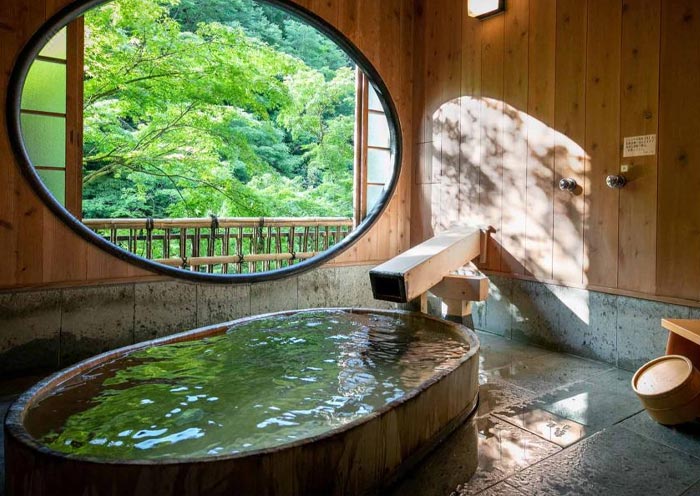

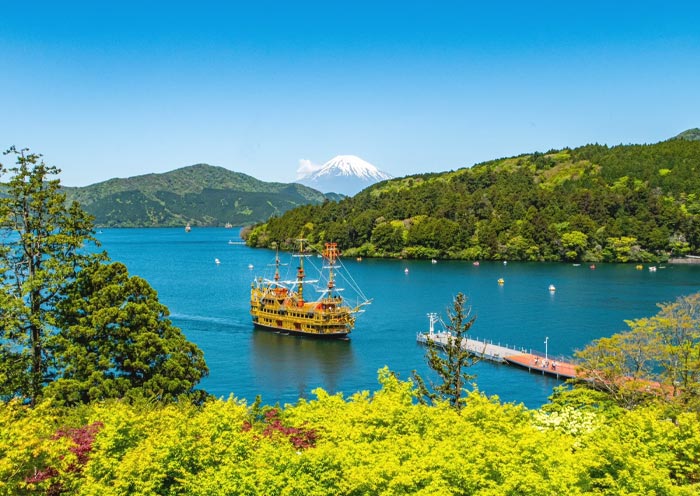
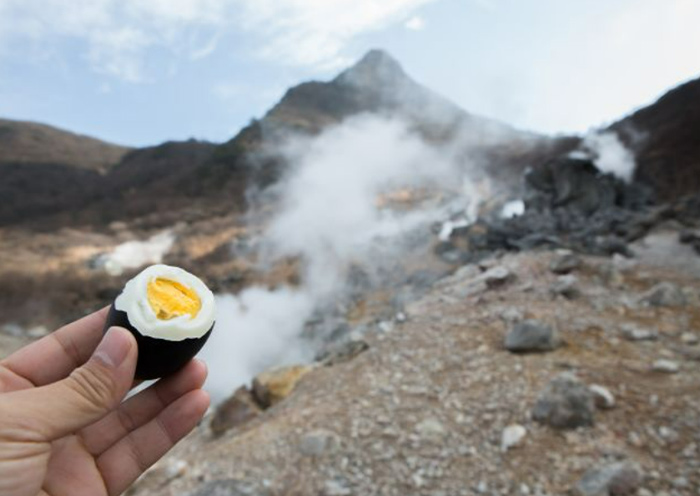
Kyoto, once the capital of Japan, epitomizes ancient Japan. Boasting 17 UNESCO World Heritage sites, over 1,000 Buddhist temples, and more than 400 Shinto shrines, Kyoto is among the world's most culturally rich cities. Known for traditional arts like tea ceremonies, kaiseki dining, and ikebana (flower arranging), Kyoto is also one of the best places to observe geishas.
Start morning in Kyoto bright and early at one of its most iconic sites - the Fushimi Inari Taisha Shrine to beat the crowds.
Fushimi Inari Taisha Shrine is famous for its thousands of vermilion torii gates, known as Senbon Torii (“thousands of torii gates”). Layers upon layers of vermilion torii gates line the lush, wooded hillside, forming a seemingly endless corridor. The vibrant orange and black gates contrast beautifully with the surrounding greenery, creating a visually stunning and almost otherworldly path that is highly photogenic.
Fushimi Inari Taisha was founded in the early 8th century (711 AD) and is primarily dedicated to Inari, the Shinto god of rice, fertility, sake, agriculture, and industry. As you explore the shrine, you will encounter hundreds of fox statues. Said to be the messengers of the god Inari, who is associated with cereal grains, these fox statues often symbolize the deity. Many of these fox statues are depicted holding a key in their mouths, which is said to open the granary.
Tips: Hiking to the summit of the mountain and back will take two to three hours, but many people go only as far as the Yotsutsuji intersection because there are fewer torii gates beyond this point. It will take 30 to 40 minutes to reach Yotsutsuji.
Next, visit Kiyomizudera Temple, a UNESCO World Heritage Site. Perched on the hillside of Eastern Kyoto, this temple is renowned for its wooden stage that juts out over the hill, providing stunning views of the city and the surrounding nature. The temple's main hall, constructed entirely without the use of nails, is an architectural marvel. Kiyomizu-dera is also celebrated for its sacred waters, which are believed to have wish-granting powers that draw countless visitors who come to drink from its stream. Don’t miss the Hondo (Main Hall), Jishu Shrine, the Otowa Waterfall, and the spiritual experience of the Tainai-Meguri room.
Tips: The scenery at Kiyomizu-dera Temple is distinctively beautiful in each season, offering a unique charm year-round. In spring, the mountains are adorned with charming cherry blossoms; in summer, they are lush with vibrant greenery; in autumn, they are decorated with brilliantly colored leaves; and in winter, they are filled with enchanting trees.
Then, walk up the well-preserved streets of Ninenzaka and Sannenzaka. These charming, sloping streets are lined with traditional shops and quaint tea houses, offering a nostalgic glimpse into Kyoto's past. As you stroll through these areas, you can shop for unique crafts, sample local snacks, and perhaps stop at a café to relax and soak in the atmosphere of old Kyoto.
Continue to Yasaka Shrine, the guardian shrine of the Gion entertainment district, which dates back over 1350 years. Yasaka Shrine is particularly favored by those seeking beauty and wealth. Visiting this significant Shinto shrine in Kyoto, you may also find yourself gaining some good luck. The shrine is most famous for its Gion Matsuri in July, during which you can witness the procession where the deities of Yasaka are paraded through the city streets.
Adjacent to the shrine, Gion is Kyoto's famous geisha district. Here, you might catch a glimpse of Geisha (Geiko) in their elaborate kimonos and traditional makeup. As you wander through the cobblestone streets of Gion, take a moment to appreciate the beautifully preserved machiya (wooden townhouses), ochaya (teahouses), and exclusive ryotei (traditional Japanese restaurants). Gion is particularly enchanting at dusk when the lanterns are lit and geishas and maiko (apprentice geishas) make their way to evening appointments, making the narrow lanes come alive.
Stay overnight in Kyoto.
Optional Activities:
- Join a Geisha Experience. It offers a chance to see a performance by a geisha, experience the tea ceremony, and learn all about its artful rituals.
- Kyoto traditional kimono experience. Wear a traditional kimono and stroll through scenic districts like Gion or around Kiyomizu-Dera Temple. Enjoy photo opportunities and the feel of traditional Japan.



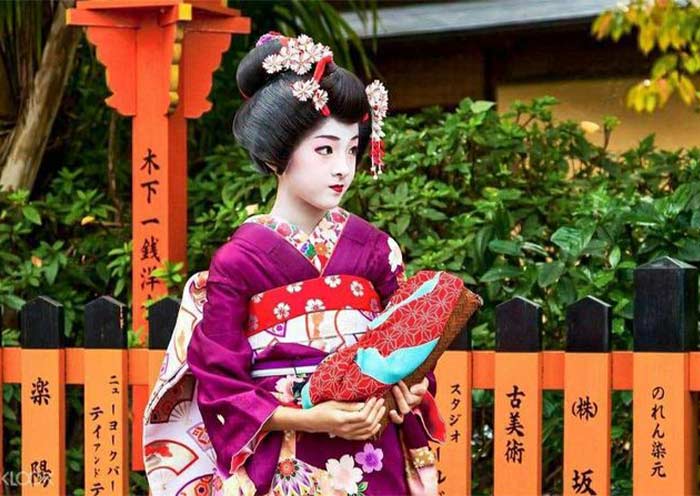
Today, you'll be visiting some of Kyoto's most iconic spots, then head to the Arashiyama and Sagano areas located in the northwest of Kyoto. This itinerary will not only allow you to deeply experience Kyoto's culture and history but also bring you closer to nature, letting you feel the changes of the seasons.
Start your day with a visit to one of Kyoto's most iconic sights, Kinkakuji Temple (Golden Pavilion) - a UNESCO World Heritage site. This Zen Buddhist temple is famous for its stunning golden exterior. The temple's stunning visual appeal comes from its top two floors, which are completely covered in gold leaf. The reflection of the golden structure shimmering in the pond in front of it, makes it perfect for photos and quiet reflection. It was originally built in 1397 as a retirement villa for Shogun Ashikaga Yoshimitsu. After Yoshimitsu's death, as per his will, the villa was converted into a Zen temple by his son.
Head to the Arashiyama area in the western part of Kyoto and take a ride on the Sagano Scenic Railway, also known as the “Romantic Train”. It is a sightseeing train line that runs between Arashiyama and Kameoka.On the way, the train runs along the Hozugawa River gorge, offering fantastic views of the forests and mountains. It is particularly scenic during the autumn foliage season, but in the spring passengers can enjoy the cherry blossoms, in the summer a cool breeze and the sound of cicadas, and in the winter dramatic snowy landscapes.
Exit at Arashiyama Station and walk to the nearby Arashiyama Bamboo Grove. The famous pathway is surrounded by towering bamboo, which creates an otherworldly atmosphere. This path leads you through one of Kyoto's most photographed landscapes.
After a short walk, explore Tenryuji Temple which is designated as a UNESCO World Heritage Site and is one of the so-called Kyoto Gozan or "five great Zen temples of Kyoto". Don't miss the garden, designed by the famous Zen master Muso Soseki, which reflects the concept of shakkei ("borrowed landscape"). Tips: The temple and its gardens are particularly beautiful during the cherry blossom season in spring and the colorful foliage season in autumn.
Conclude your visit to Arashiyama by walking to the Togetsukyo Bridge, an iconic historical wooden bridge offering picturesque views of the surrounding mountains and river, encapsulating the tranquil beauty of the area.
After the tour, drive back to Kyoto downtown. Stay overnight in Kyoto.

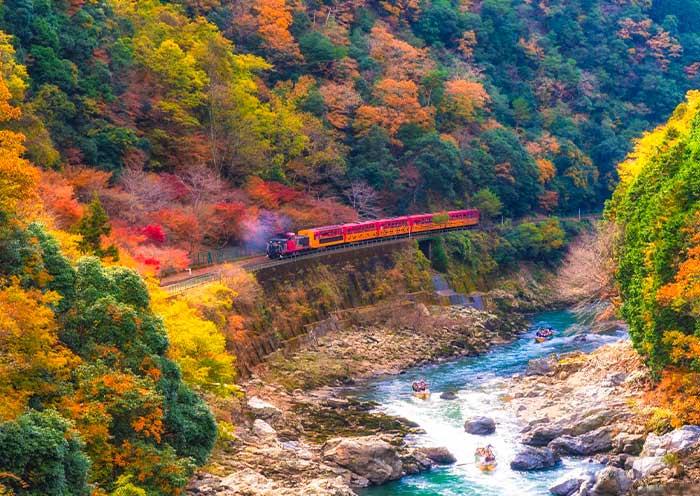

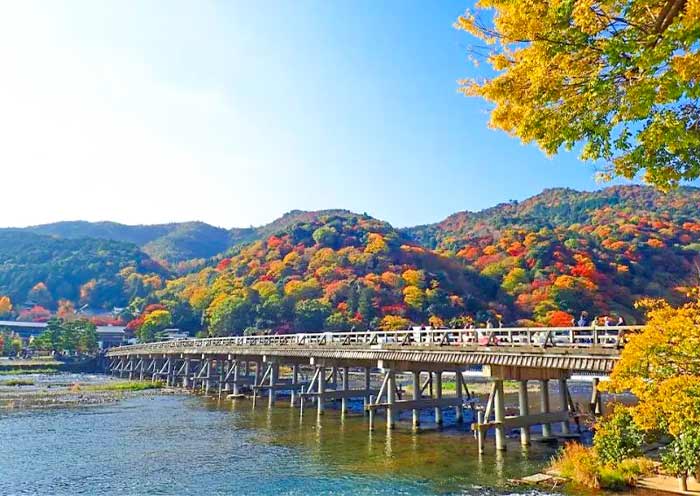
Today, head to the northern suburbs to experience the ancient charm and natural beauty of Kyoto. Take the scenic Eizan Electric Railway to Kifune Shrine, visit Sanzen-in Temple, and then return to the city center to explore Nijo Castle and Nishiki Market.
Begin your day by boarding the Eizan Electric Railway. Enjoy the scenic train travel, especially the stunning " Momiji Tunnel (Maple Tree Tunnel) " between Ichihara and Ninose Stations, a 250-meter-long track lined with more than 280 maple trees. In summer, it is full of lush green, and in autumn, it is a sea of fiery red.
Arrive at Kibuneguchi Station and follow the pathway leading up to Kifune Shrine. As you approach, you will be greeted by rows of red lanterns lining the stone stairs, creating one of the shrine's most famous and picturesque spots. Kifune Shrine is dedicated to the water deity who governs rainfall and water sources. Here, you can experience a unique form of divination called "mizu-ura" (water fortune-telling), where papers with prayers are placed in the shrine's stream, revealing your fortune as they soak.
Kifune Shrine is a complex of three shrines (Main Shrine, Yui no Yashiro, and Okunomiya) situated at different positions on the hillside. Although the shrine is not very large the path leading up to it is lush with dense forests, accompanied by the soothing sounds of the Kibune River, creating a uniquely mysterious and serene atmosphere. In summer, the thick trees provide a cool break from the heat, while autumn brings a spectacular display of fall colors with the changing maple leaves.
Optional Kawadoko Dining:
From June toSeptember, Kibune's restaurants build covered platforms out over the river where visitors can enjoy a meal as the water flows beneath them. Known as kawadoko, dining on the platforms is a relaxing experience and an excellent way to escape the summer heat. Most restaurants serve kaiseki meals that range in price from 3,000 to 20,000 yen per person.
Then, drive to Sanzenin Temple, located in Ohara, Kyoto. It is one of the three temples of the Tiantai Sect. Sanzenin's vast temple has towering old trees, moss everywhere, and gurgling streams and it is renowned for its stunning gardens. The Shuheki-en Garden and Yusei-en Garden are the best places to enjoy the scenery of Sanqianyuan. These gardens are ornamental pond-style gardens, centered around ponds, are covered in dense moss, resembling lush green carpets, and serene greenery can be seen everywhere. Cherry blossoms in spring, hydrangeas in summer, maple leaves in autumn, and snowscapes in winter, whenever one comes to Sanzen-in they are surrounded by the tranquil beauty of the seasons.
Ojo Gokuraku-in Hall, centrally located in the moss garden, is a designated important cultural property. Inside is enshrined the culturally treasured statue of Amida Sanzon. In the depths of the garden, you will find there are a number of amusing stone statues that peek out from the moss. These mossy child Jizo statues were hand-carved by sculptor Takashi Sugimura. In Japanese culture, Jizo is considered a guardian of children and travelers. It's great fun to spot these charming little figures in their hiding places.
After, make your way back to the city center and visit Nijo Castle, another UNESCO World Heritage site, to delve deeper into Japan’s feudal history. Constructed in 1603 as the Kyoto residence of Tokugawa Ieyasu, the first shogun of the Edo period, its expansive grounds and ornate architecture highlight the power and wealth of the dominant samurai clans during the Edo period (1603-1867).
The castle features two concentric rings of fortifications, each consisting of a wall and a wide moat. After passing through the grand Kara-mon (gate), you will enter Ninomaru Palace, which is divided into five buildings with numerous chambers. The interiors are adorned with masterful paintings by the Kano school, reflecting the cultural and artistic heritage of the era. The castle is renowned for its "nightingale floors," (that sing and squeak at every move, making it difficult for intruders to move about quietly), designed as a security measure against intruders. Don’t miss the excellent Ninomaru Palace Garden, which was designed by the tea master and landscape architect, Kobori Enshu.
Historical Context:
Nijo Castle holds a significant place in Japanese history. It was at Nijo Castle in 1867 that Tokugawa Yoshinobu, the 15th and last shogun of the Tokugawa dynasty, declared the restoration of imperial rule, leading to the Meiji Restoration. This event marked the end of the shogunate system in Japan and the beginning of modern Japan as a nation-state.
Then, dive into the vibrant and colorful Nishiki Market, known as "Kyoto's Kitchen." This vibrant market is the perfect place to sample a variety of local dishes, such as cute Japanese sweets wasabi salt, fresh sashimi skewers to tako tamago (small octopus head stuffed with a quail egg on a stick). Enjoy browsing through the stalls and trying different Kyoto delicacies.
Stay overnight in Kyoto.

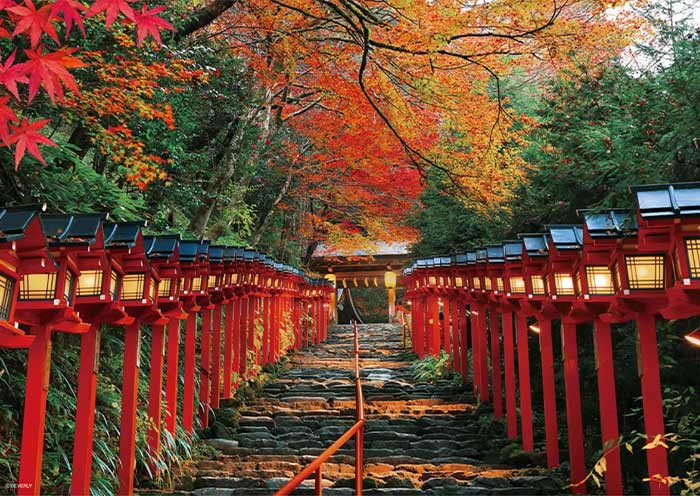


Today, you will depart from Kyoto to Osaka. Along the way, you will visit Nara and Uji to make the most of your day.
Driving to Uji takes about 40 minutes. Uji is renowned for its green tea and is the perfect spot to delve into traditional Japanese tea culture. In the 7th century, Buddhist monks introduced green tea from China to Japan. Initially, monks ground the leaves into a powder to help them stay awake during long periods of meditation. It wasn't until the Kamakura period (1192-1333) that it became a popular beverage. Gradually, green tea powder became a vital ingredient in the tea ceremony, especially popular among the aristocracy.
Visit Byodoin Temple, a Buddhist temple from the Heian period, now listed as a World Heritage Site. Its most famous structure, the Phoenix Hall, is depicted on the Japanese ten-yen coin. Inside the hall, you can find many valuable artworks and relics, including a designated National Treasure, and the statue of Amida Buddha.
The street leading to Byodoin Temple, spanning 300 meters, is Uji's busiest Matcha street, lined with restaurants on both sides. No matter what delicacy you indulge in - be it ice cream or sweets - the unique aroma of green and roasted tea permeates the air. Japan's oldest tea shop is located in Uji.
Uji also has a river sharing the city’s name, the Uji River, which divides the town in two. You can take a leisurely stroll along the river, and visit Uji Bridge, an important setting in the Tale of Genji, now one of Kyoto’s most romantic spots.
Optional Activities: If you want to experience the joy of tea-making firsthand, consider joining a tea workshop in Uji. Learn how to prepare tea, how to grind matcha to perfect fineness, and sample different tea beverages.
After finishing your tour of Uji, head to Nara, just 50 minutes away. Nara holds a special place in Japanese history as the country's first permanent capital, predating Kyoto. Nara boasts eight World Cultural Heritage sites, making it Japan's second most culturally rich city after Kyoto.
Visit Todaiji Temple, one of Japan's most historically significant temples and a UNESCO World Heritage site. It is known for housing the world’s largest bronze statue of the Buddha Vairocana, which stands just over 16m high and consists of 437 tonnes of bronze and 130kg of gold. It represents Vairocana Buddha and is flanked by two Bodhisattvas. Todaiji's main hall, Daibutsu-den (Big Buddha Hall), is one of the world’s largest all-wood buildings, despite the fact that the present reconstruction of 1692 is only two-thirds of the original temple hall's size.
Walk to Nara Park, adjacent to Kasuga Taisha. This park is famous for its hundreds of freely roaming deer, considered messengers of the gods in Shinto tradition. Purchase some shika senbei (deer crackers) to feed the deer as you stroll through the park.
Head to Kasuga Taisha (Kasuga Grand Shrine), Nara’s most celebrated Shinto shrine, another UNESCO World Heritage Site. It is renowned for its lanterns, which have been donated by worshippers. Hundreds of bronze lanterns can be seen hanging from the buildings, while thousands of stone lanterns line its approach and the surrounding woods. These lanterns are lit twice a year during the Lantern Festivals in February and August, creating an ethereal and mesmerizing atmosphere.
After the tour, drive to Osaka (typically takes around 50 minutes) and stay overnight.

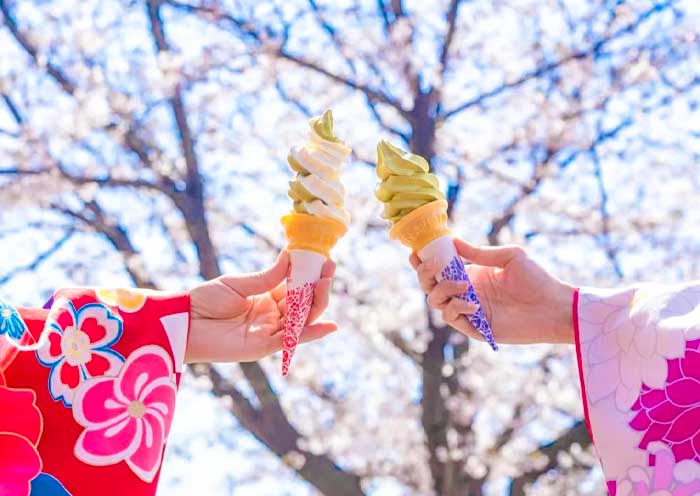
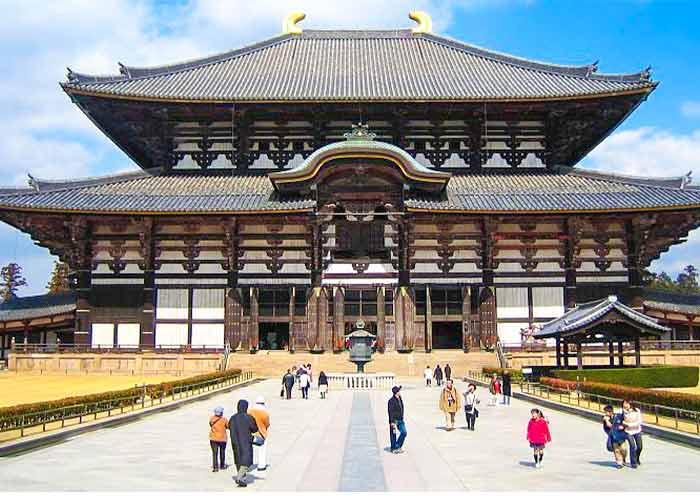
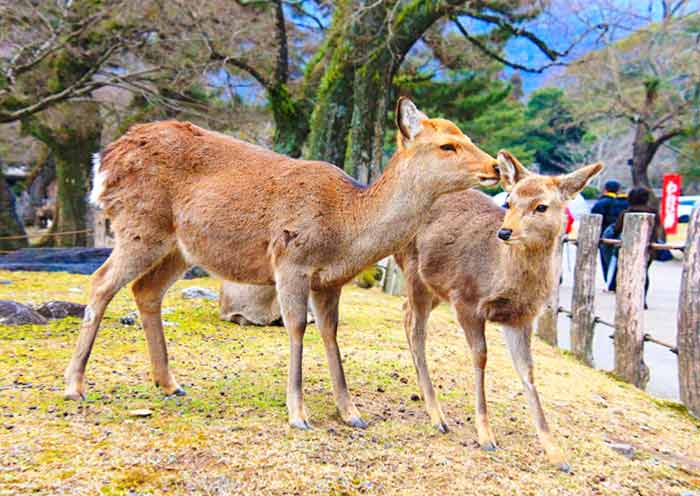
Osaka, Japan's third-largest city and a major economic hub, is renowned for its rich history, diverse cuisine, distinctive culture, and robust economic strength. The city's unique sense of humor and open personality make it an exceptionally interesting place, more colorful than most cities. Acres of concrete are covered with dazzling neon lights and brightly colored storefronts. Osaka is a city that loves to eat, known as the "nation's kitchen." It boasts a wide variety of culinary delights.
Start your day at Osaka Castle Park, one of Japan’s most famous landmarks and a symbol of Osaka’s historical grandeur. Originally built in 1583 by Toyotomi Hideyoshi, a powerful daimyo who aimed to unify Japan, it was the largest castle of its time. After multiple renovations and reconstructions, today's Osaka Castle has been transformed into an open park, covering a total area of 105.6 hectares, making it a must-visit attraction.
Walking into the scenic area of Osaka Castle, you'll be amazed by the massive scale and precision of the moats, gates, and stone walls. The largest stone slab is 11 meters wide, and many stones are inscribed with the crests of the 64 daimyō (feudal lords) tasked with the castle’s construction back in 1620. The most breathtaking feature is the Main Tower (Tenshukaku) of Osaka Castle, which stands tall against the sky at the center of the extensive castle grounds. The castle tower's interior is a museum showcasing artifacts related to Toyotomi Hideyoshi and the castle's history. The observation deck on the 8th floor offers a panoramic view of Osaka Castle Park and the Osaka Plain.
Optional Activity: Take some time to stroll through the Nishinomaru Garden, which offers a picturesque setting with over 600 cherry trees and beautiful views of the castle tower from below. This is especially enchanting during the cherry blossom season, which usually occurs in late March and/or early April.
In the afternoon, you will experience the unique charm of the city through a street food and shopping tour. Enjoy shopping at Shinsaibashi-suji Shopping Street, Osaka's busiest shopping arcade. Then, head to the lively district of Dotonbori, where waterways are lined with luminous advertisements and signs. It's especially glitzy during the holiday season, with decorations strung across the bridges. Full of fantastic restaurants, clubs, and karaoke bars, it's the city's go-to area for entertainment. Take a photo at the iconic Glico Man sign. Try takoyaki, ball-shaped octopus bites, kushikatsu (Japanese deep-fried skewered meat and vegetables), and okonomiyaki, a savory Japanese pancake topped with whatever you like.
Optional Activities:
Kamigata Ukiyoe Museum offers a fascinating glimpse into the traditional Japanese art form of ukiyo-e.
Shinsekai (New World) & Tsutenkaku Tower: Shinsekai, meaning "New World," is a nostalgic and unique shopping district in Osaka, known for its retro vibe, old-school charm, and vibrant atmosphere. Originally built in 1912, Tsutenkaku Tower offers views of the Osaka skyline and is located in the retro-themed Shinsekai area.



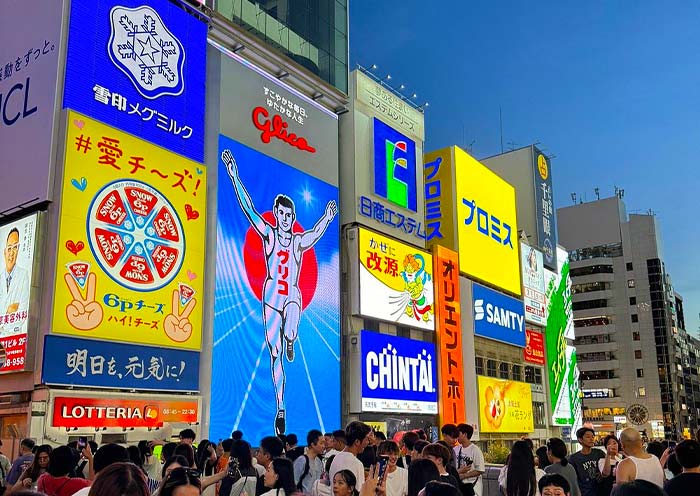
Today, you will head to Hiroshima, a modern city featuring broad, tree-lined boulevards, meandering rivers, and a bustling city center. While Hiroshima is perhaps best known for being the target of an atomic bomb attack near the end of World War II, the city is not defined by this tragic history. Instead, it has continually advocated for peace and understanding.
Note:
The distance between Osaka and Hiroshima is about 300 kilometers. A Shinkansen (Bullet Train) journey takes approximately 1.5–2 hours, while driving takes 4–5 hours. To optimize time and costs, we will arrange for a guide to accompany you on the Shinkansen journey between the cities, and you'll explore urban areas using public transportation (with actual transportation costs paid on-site).
Start your day early as your guide picks you up from your hotel in Osaka. The guide will assist you to the train station to board the Shinkansen (bullet train) and accompany you to Hiroshima.
Upon arrival in Hiroshima, proceed to the Hiroshima Peace Memorial Park. The park is dedicated to the victims of the atomic bomb in 1945 and is a poignant reminder of the costs of war. Hiroshima Peace Memorial Park has numerous monuments and the iconic Atomic Bomb Dome.
The Atomic Bomb Dome, officially known as the Hiroshima Peace Memorial, is one of the most iconic structures in the Hiroshima Peace Memorial Park. Originally serving as the Hiroshima Prefectural Industrial Promotion Hall, it is known for its distinctive European-style dome. On August 6, 1945, it was struck by an atomic bomb, and the dome was directly beneath the bomb's hypocenter, approximately 160 meters above ground. While the surrounding area was almost destroyed, parts of the building's structure miraculously survived, standing as a direct testament to the destructive power of the bomb. In 1996, the A-Bomb Dome was designated as a UNESCO World Heritage Site, symbolizing peace and serving as a warning against nuclear warfare.
Explore the Hiroshima Peace Memorial Museum to learn about the events leading up to the bombing, its devastating effects on the city's inhabitants, and the city’s post-war recovery. The museum holds exhibits that include personal items from victims, photographs, and other significant artifacts.
Today, if time allows, you can visit the island of Miyajima, a revered sacred site known for its breathtaking scenery and the famous floating torii gate of Itsukushima Shrine. On the short ferry ride there, you'll see the renowned Itsukushima Shrine, which is situated on Miyajima. At high tide, it appears to float on the sea. It has been designated as a UNESCO World Heritage Site and is among Japan's most celebrated tourist attractions. Be sure to stand on the deck to get a good view of the giant red Torii gate rising out of the sea.
After the tour, board the Shinkansen back to Osaka with your guide. Stay overnight in Osaka.
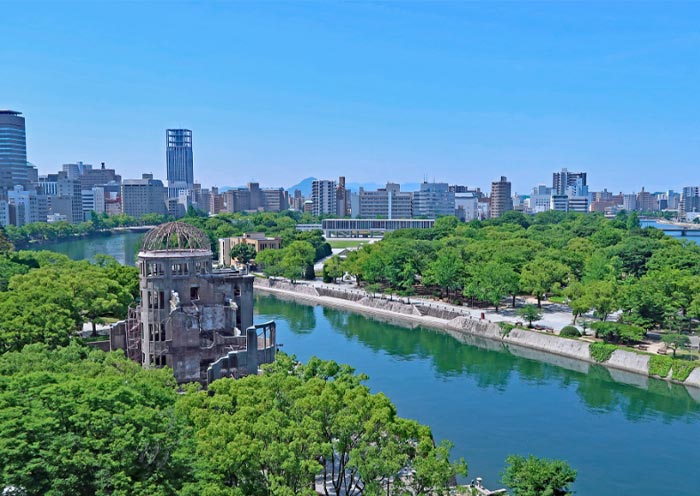


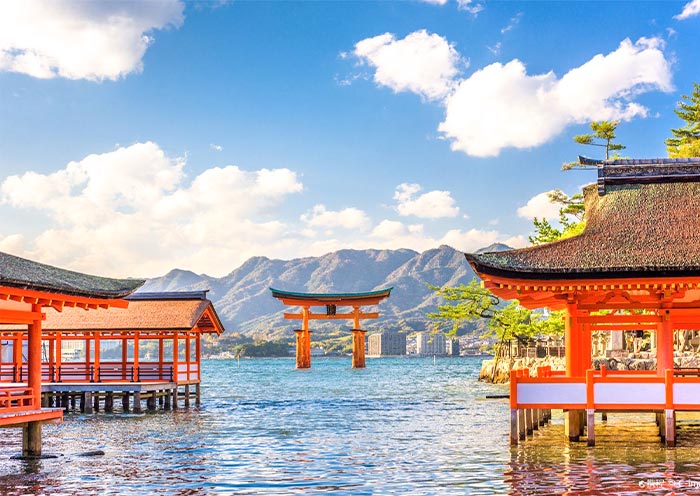
Enjoy an exhilarating day at Universal Studios Japan (USJ), one of the premier theme parks in Asia.
Note: Today we only include transfer service. If you need assistance with ticket booking, please consult with our travel advisor.
Universal Studios Japan offers a diverse range of themed areas such as The Wizarding World of Harry Potter, Super Nintendo World, and Jurassic Park, among others. Each zone provides unique rides, interactive experiences, and entertainment that can captivate visitors of all ages. Whether you're battling alongside Harry Potter, racing with Mario, or escaping a ferocious dinosaur, USJ provides an immersive experience that combines cutting-edge technology with your favorite fictional worlds.
Get ready to create unforgettable memories at Universal Studios Japan, where excitement and magic await you at every turn!
Stay overnight in Osaka.
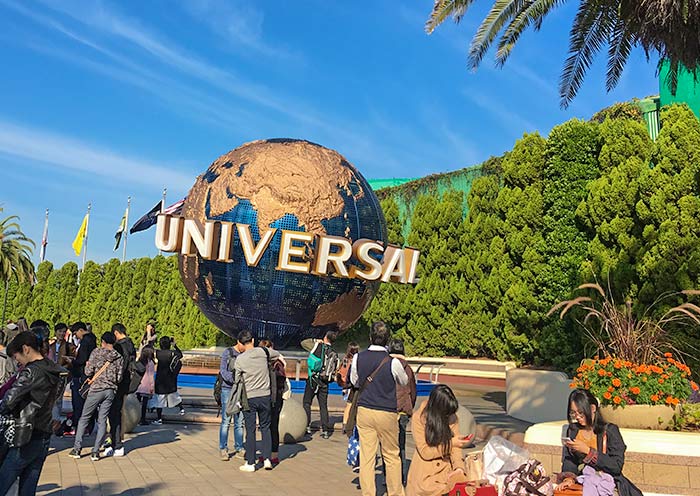


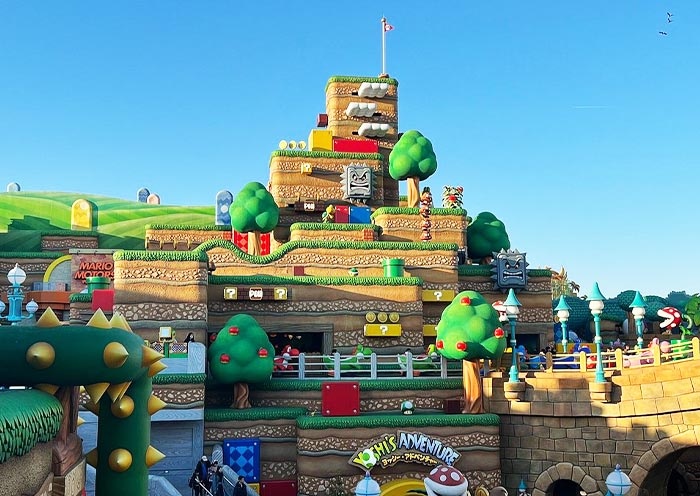
It is time to end your unforgettable 14 Days Japan Tour. Your driver will ensure a smooth transfer to Kansai International Airport (KIX) or Kansai International Airport (KIX) for your departure flight.
Trip Extension: If you'd like to extend your adventures in Japan, contact us to tailor your trip to your preferences. This itinerary is just a starting point - every aspect is fully customizable.
Thank you for choosing Asia Odyssey Travel for your tour of Asia. We are dedicated to enhancing your travel experiences and look forward to welcoming you on your next adventure in Asia. Have a safe journey home!
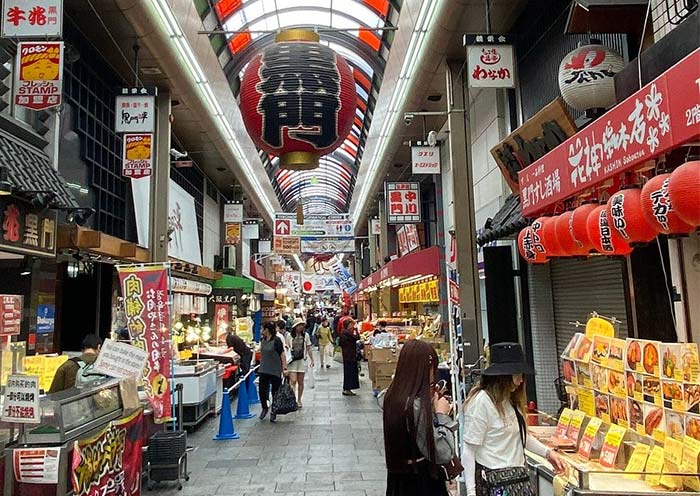
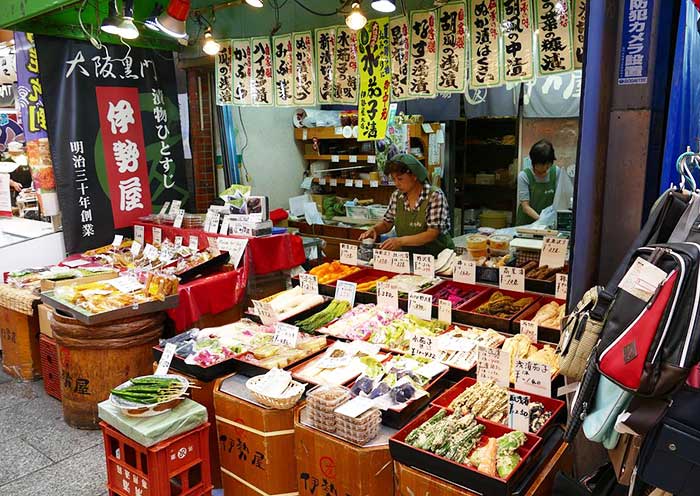


Explore Tour Costs and Request a Free Quote
| Number of People | Regular Season | Spring Season | Autumn Season | Book Tour |
|---|---|---|---|---|
| (Jan, Feb, May, Jun, Jul, Aug, Sep) | (Mar, Apr) | (Oct, Nov, Dec) | ||
| 2 Persons | from $7400 pp | from $9100 pp | from $7960 pp | Free Enquiry |
| 4 Persons | from $5300 pp | from $6570 pp | from $5660 pp | Free Enquiry |
| 6 Persons | from $4730 pp | from $5870 pp | from $5010 pp | Free Enquiry |
What’s Included & What’s Excluded
What's Included:
What's Excluded:
Important Travel Tips for Visiting Japan
Get the right visa. Depending on your nationality and the length of your stay, you may need to apply for a visa in advance. You can do this online or at a Japanese embassy or consulate. Many countries are part of Japan’s visa exemption program, allowing their citizens to enter Japan for short stays without a visa for tourism. Always check if your country is on this list before applying for a visa. If you have any questions, feel free to contact our travel experts for more information.
The best time to visit Japan depends on your interests:
Spring (March to May): Ideal
for witnessing the cherry blossoms and enjoying mild weather. Major cities like Tokyo, Kyoto, and Hiroshima
are particularly beautiful as cherry trees bloom spectacularly.
Summer (June to
August): Perfect for experiencing vibrant festivals such as Gion Matsuri in Kyoto,
Tanabata Matsuri across the country, and enjoying the natural beauty of Hokkaido, which is less humid than
the rest of Japan. Note that early summer (June) is the rainy season.
Autumn (September to
November): Offers stunning fall foliage, making it a great time for hiking and temple
visits. The weather is cool and pleasant, ideal for outdoor activities.
Winter (December to
February): The best time for winter sports, especially in regions like Hokkaido and the
Japanese Alps. Onsens (hot springs) are also a popular attraction during the cold months.
Bring Cash. Despite advances in digital payment, many smaller vendors, temples, and rural
areas operate predominantly with cash. It’s wise to keep some yen on hand at all
times.
Universal Travel Adapter. Japan uses 100V with two straight thin
pins.
Passport: Ensure it’s valid for at least six months beyond your date
of travel.
Visa (if required): Make sure you have the right visa for your
travel.
Travel Insurance Information: Always good to have on hand.
Bow when greeting: A slight bow is a common way to say hello, thank you, or
sorry.
Be mindful of your noise level: Japanese culture values quietness,
especially in public transportation and residential areas.
Follow the rules: Whether
it's waiting in line or adhering to signage, following local rules and etiquette is highly
valued.
Etiquette in temples and shrines: Wear modest clothing and follow specific
customs such as washing hands and mouth before entering a shrine or temple. Photography might be restricted
in sacred areas.
Looking for more travel guides for first-time visitors to Japan? Want to gather additional information to plan your trip? Our team of professional travel experts has written over 40 articles about Vietnam. Please check out ourJapan Travel Guide for inspiration and detailed insights.
Hotel Conditions for Your Japan Tour
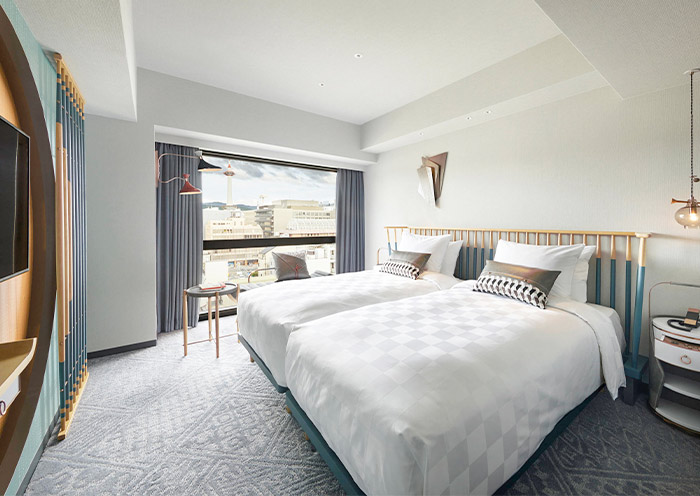

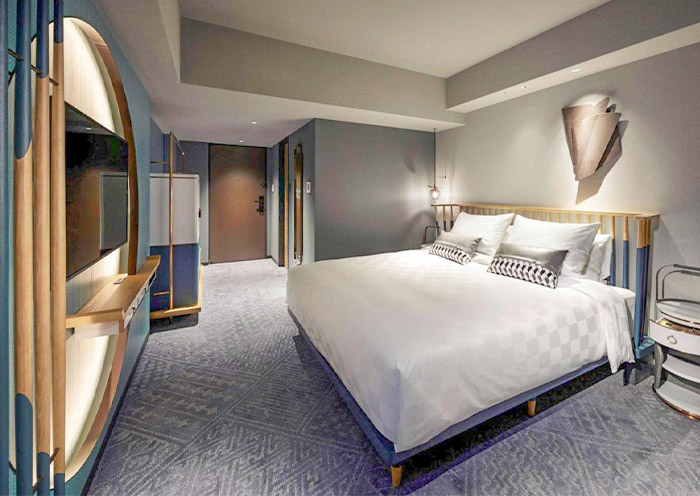

We offer a range of accommodation options to suit various preferences and budgets: luxurious 5-star hotels, comfortable 4-star hotels, and economical 3-star hotels. Our selected hotels are conveniently located close to the city center or popular tourist spots.
For those seeking a more distinctive lodging experience, we also offer Traditional Ryokans, Machiya, Onsen (hot springs) Hotels, etc. If you have specific needs or preferences, please consult with your travel advisor.
Tips: Be aware that hotel room sizes in Japan may be smaller compared to those in other developed countries due to the scarcity of land. If your budget allows, it is recommended to opt for a higher category of hotel, which will generally offer more comfort.
Photo Gallery for This Itinerary
Latest Japan Tours Reviews from Our Customers

Sam Lin
Singapore
Date of Experience: Dec 24, 2024
Tour Customized by: Vincent
You May be Interested in This Tour: 8 Days Best Japan Group Tour: Japan Highlights & Hiroshima

Zhang Xin Hua
Malaysia
Visiting Japan’s Golden Route in October was incredible! From Tokyo's vibrant city life to the serene beauty of Mount Fuji, every stop was unforgettable. Kyoto’s temples and Nara’s friendly deer captured Japan’s charm, while Osaka’s food scene was a delight. The mix of tradition and modernity made it a perfect 7-day journey!
Date of Experience: Oct 26, 2024
Tour Customized by: Allan
You May be Interested in This Tour: 7 Days Japan Golden Route Tour in Small Group

Dan Z
Washington DC
Date of Experience: Aug 24, 2024
Tour Customized by: Rex
You May be Interested in This Tour: 7 Days Japan Kansai Tour with Hiroshima: Osaka, Kyoto, Uji & Nara
Price: From USD 4730 pp
(Based on a private tour for 6 persons staying in 4-star hotels. Prices may vary depending on the itinerary, travel dates, and group size. )
(Book at least 6 months in advance)
